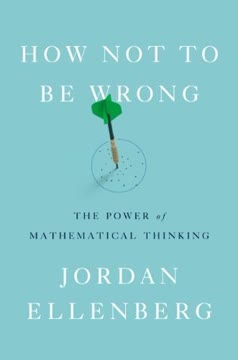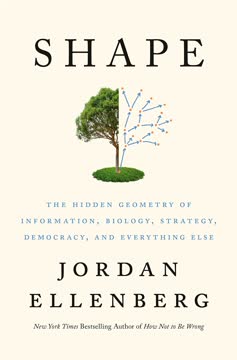Key Takeaways
1. Mathematics extends common sense to solve complex problems
Mathematics is common sense.
Mathematics as a tool. Mathematics provides a powerful framework for extending our common sense reasoning to solve complex problems. It allows us to formalize intuitive concepts and apply rigorous logic to reach reliable conclusions. By translating real-world situations into mathematical models, we can analyze them systematically and gain insights that may not be apparent through casual observation alone.
Practical applications. Mathematics finds applications across diverse fields:
- Physics: Modeling the motion of objects and behavior of fundamental particles
- Engineering: Designing efficient structures and optimizing systems
- Economics: Analyzing market trends and making financial predictions
- Biology: Understanding population dynamics and genetic inheritance
- Computer science: Developing algorithms and cryptographic systems
Overcoming limitations. While our intuition serves us well in many everyday situations, it can be misleading when dealing with large numbers, small probabilities, or counterintuitive phenomena. Mathematical reasoning helps us overcome these limitations and arrive at correct conclusions even when our gut feelings may lead us astray.
2. Linear thinking often leads to incorrect conclusions
Not every curve is a line.
The pitfall of linearity. Many people instinctively assume that relationships between variables are linear – that is, changes in one variable lead to proportional changes in another. However, reality is often more complex, with non-linear relationships being common in nature, economics, and many other domains.
Examples of non-linearity:
- Population growth: Exponential rather than linear
- Dose-response curves in medicine: Often S-shaped
- Economic returns: Diminishing marginal returns
- Climate change: Tipping points and feedback loops
Avoiding oversimplification. Recognizing when linear thinking is inappropriate is crucial for accurate analysis and decision-making. By considering the possibility of non-linear relationships, we can develop more sophisticated models that better reflect reality and lead to more reliable predictions and insights.
3. Regression to the mean explains many misunderstood phenomena
Excellence doesn't persist; time passes, and mediocrity asserts itself.
Understanding regression. Regression to the mean is a statistical phenomenon where extreme observations tend to be followed by more average ones. This occurs naturally due to random variation and is often misinterpreted as a meaningful trend or effect.
Common misinterpretations:
- Sports: A player's "hot streak" followed by average performance
- Medicine: Apparent effectiveness of treatments for chronic conditions
- Education: Programs seeming to improve test scores of low performers
- Business: High-performing companies "losing their edge" over time
Avoiding false conclusions. Recognizing regression to the mean helps prevent attributing changes to non-existent causes. When evaluating interventions or trends, it's crucial to consider whether observed changes might simply be a return to average rather than a genuine effect of some action or policy.
4. Correlation does not imply causation
Correlation isn't transitive.
The correlation trap. While correlation between two variables can suggest a relationship, it does not necessarily imply that one causes the other. Many factors can lead to correlation without causation, including:
- Coincidence
- Reverse causation
- Common cause
- Confounding variables
Examples of misleading correlations:
- Ice cream sales and crime rates (both increase in summer)
- Shoe size and reading ability in children (age affects both)
- Number of Nobel Prizes and chocolate consumption by country
Establishing causation. To determine causation, additional evidence is needed beyond mere correlation. This may include:
- Controlled experiments
- Temporal precedence (cause precedes effect)
- Plausible mechanisms
- Consistency across multiple studies
- Ruling out alternative explanations
5. Understanding probability prevents common statistical errors
Improbable things happen a lot.
Probability misconceptions. Many people struggle with accurately interpreting probabilities, leading to errors in judgment and decision-making. Common mistakes include:
- Neglecting base rates (e.g., false positive paradox)
- Misunderstanding independence of events
- Failing to account for multiple comparisons
- Overestimating the likelihood of rare events
Improving probabilistic reasoning:
- Consider long-term frequencies rather than individual outcomes
- Use Bayesian thinking to update beliefs based on new evidence
- Be aware of cognitive biases that affect probability judgments
- Practice calculating probabilities in everyday situations
Real-world implications. Better understanding of probability can improve decision-making in various domains:
- Medicine: Interpreting diagnostic test results
- Finance: Assessing investment risks
- Law: Evaluating evidence in criminal cases
- Policy: Analyzing the potential impact of interventions
6. Expected value helps make better decisions under uncertainty
If gambling is exciting, you're doing it wrong.
Calculating expected value. Expected value is the average outcome of a decision if it were repeated many times. It is calculated by multiplying each possible outcome by its probability and summing the results. This provides a rational basis for decision-making under uncertainty.
Applications of expected value:
- Gambling: Determining if a bet is favorable
- Insurance: Setting premiums and assessing risks
- Business: Evaluating potential investments or strategies
- Personal finance: Comparing job offers or retirement plans
Limitations to consider. While expected value is a powerful tool, it has limitations:
- It doesn't account for risk tolerance or emotional factors
- Rare, high-impact events may be underweighted
- Probabilities and outcomes may be difficult to estimate accurately
To make well-rounded decisions, consider expected value alongside other factors such as worst-case scenarios, personal preferences, and ethical considerations.
7. Public opinion is often incoherent and paradoxical
There is no such thing as public opinion.
Aggregation paradoxes. When individual preferences are combined to form "public opinion," the result can be inconsistent or even contradictory. This occurs due to:
- Intransitive preferences (A > B > C > A)
- Influence of irrelevant alternatives
- Different methods of aggregating preferences yielding different results
Examples of inconsistent public opinion:
- Wanting to reduce government spending but increase funding for specific programs
- Preferring candidate A to B, B to C, and C to A in pairwise comparisons
- Changing preferences based on the presence of a third, irrelevant option
Implications for democracy. The incoherence of public opinion challenges simplistic notions of "the will of the people." It suggests that:
- There may not always be a clear "correct" choice in elections or referendums
- Different voting systems can lead to different outcomes
- Policymakers must navigate competing preferences rather than simply implementing a unified public will
8. Critical thinking requires questioning assumptions and methodologies
It is not always wrong to be wrong.
Scrutinizing claims. Critical thinking involves carefully examining the assumptions, methods, and evidence behind claims and conclusions. This includes:
- Identifying potential biases or conflicts of interest
- Evaluating the quality and relevance of data
- Considering alternative explanations
- Assessing the limitations of studies or analyses
Key questions to ask:
- What are the underlying assumptions?
- How was the data collected and analyzed?
- Are the conclusions justified by the evidence?
- What alternative interpretations are possible?
- What are the potential implications or consequences?
Balancing skepticism and action. While critical thinking is essential, it's important to recognize that perfect certainty is rarely achievable in real-world situations. Decision-makers must often act on incomplete information, weighing the potential costs of inaction against the risks of making a mistake. The goal is to make the best possible decisions given the available evidence, while remaining open to new information and willing to update beliefs when warranted.
</instructions>
Last updated:
FAQ
What's How Not to Be Wrong about?
- Mathematics in Everyday Life: The book explores how mathematical thinking can enhance decision-making in various areas, from politics to medicine. It emphasizes that math is not just about numbers but about understanding the world.
- Real-World Applications: Ellenberg uses examples like Abraham Wald's bullet hole analysis to show how math can lead to better insights and decisions.
- Accessible to All: The author aims to make complex mathematical concepts understandable for a general audience, demonstrating that everyone can engage with math meaningfully.
Why should I read How Not to Be Wrong?
- Enhance Critical Thinking: The book improves your ability to think critically and analytically about everyday problems, helping you avoid common reasoning pitfalls.
- Engaging and Informative: Filled with anecdotes and humor, Ellenberg's storytelling makes complex ideas relatable and enjoyable.
- Broader Perspective: It encourages seeing connections between math and various fields, fostering a holistic understanding of math's influence on our lives.
What are the key takeaways of How Not to Be Wrong?
- Math is Everywhere: Mathematics is integral to everyday life, influencing decisions in politics, economics, and personal choices.
- Beware of Misleading Statistics: Ellenberg warns about misinterpreting statistical data, such as percentages and averages, using examples like obesity projections.
- Understanding Probability: The book emphasizes the importance of understanding probability, especially in scientific research and decision-making.
What are the best quotes from How Not to Be Wrong and what do they mean?
- "Mathematics is the extension of common sense by other means.": Math enhances our natural reasoning abilities, providing tools to understand complex situations better.
- "The armor goes where the bullet holes aren’t.": This highlights the importance of understanding survivorship bias and making decisions based on comprehensive data.
- "Improbable things happen a lot.": A reminder that unlikely events can occur, emphasizing the need for careful statistical reasoning.
How does Jordan Ellenberg explain the concept of linearity in How Not to Be Wrong?
- Linearity vs. Nonlinearity: Ellenberg contrasts linear thinking, assuming direct relationships, with nonlinear thinking, recognizing complex relationships.
- Real-World Examples: He uses the Laffer curve to show how tax rates and government revenue can have a nonlinear relationship.
- Importance of Context: Understanding context is crucial for informed decisions, as optimal solutions often lie between extremes.
What is Bayesian inference as discussed in How Not to Be Wrong?
- Definition of Bayesian Inference: A statistical method that updates the probability for a hypothesis as more evidence becomes available.
- Prior and Posterior Probabilities: Combines prior beliefs with new data to form a posterior belief, illustrated through examples like roulette outcomes.
- Real-World Applications: Applied in fields like medicine and social sciences to improve decision-making, allowing for a nuanced understanding of uncertainty.
How does How Not to Be Wrong address the misuse of statistics?
- Misleading Percentages: Ellenberg discusses how percentages can be manipulated to create misleading narratives, warning against taking statistics at face value.
- The Importance of Context: Context matters when interpreting statistics, as seen in job growth data where the nontradable sector dominated.
- Critical Evaluation: Encourages critical evaluation of statistical claims, reminding that statistical significance doesn't always mean practical significance.
What is the significance of the story of Abraham Wald in How Not to Be Wrong?
- Survivorship Bias: Wald's story illustrates survivorship bias, where conclusions are drawn based only on visible outcomes, ignoring those that didn't survive.
- Mathematical Insight: Wald's insight about where to place armor on planes during WWII demonstrates how mathematical reasoning can lead to better decision-making.
- Real-World Application: Ellenberg uses this story to show how mathematical thinking can be applied to real-world problems, encouraging critical thinking about data.
How does How Not to Be Wrong explain the concept of correlation?
- Correlation Explained: A statistical measure describing the extent to which two variables change together, indicating predictable relationships.
- Correlation Does Not Imply Causation: Just because two variables are correlated does not mean one causes the other, a common misconception.
- Visual Representation: Scatterplots are used to visualize correlations, revealing the strength and direction of relationships between variables.
What role does regression to the mean play in How Not to Be Wrong?
- Definition of Regression to the Mean: A statistical phenomenon where extreme observations tend to be closer to the average upon subsequent measurements.
- Implications for Performance: High performers are often subject to this phenomenon, leading to a natural decline in performance over time.
- Real-World Examples: Examples from sports, like baseball players' performance, show how regression to the mean can mislead expectations.
How does How Not to Be Wrong illustrate the importance of understanding statistics?
- Statistics in Everyday Life: Statistics play a crucial role in decision-making, from health choices to financial investments.
- Avoiding Misinterpretation: Highlights common pitfalls in interpreting statistical data, encouraging critical evaluation of data.
- Empowerment Through Knowledge: Understanding statistics empowers readers to make informed decisions and avoid being misled by misleading data.
What is the significance of the title How Not to Be Wrong?
- Focus on Avoiding Mistakes: The title reflects the book's theme of using mathematical reasoning to avoid common errors in thinking.
- Emphasis on Critical Thinking: Suggests a proactive approach to thinking critically about information and data.
- Broad Applicability: Implies that the lessons learned can be applied across various domains, from personal finance to scientific inquiry.
Review Summary
How Not to Be Wrong receives mostly positive reviews for making mathematics accessible and relevant to everyday life. Readers appreciate Ellenberg's engaging writing style, humor, and real-world examples. Many find the book enlightening, particularly regarding statistics and probability. Some criticize its length and occasional complexity. Political commentary in later chapters divides readers. Overall, reviewers recommend it for those interested in applied mathematics and critical thinking, though some suggest it may be challenging for readers without a mathematical background.
Similar Books
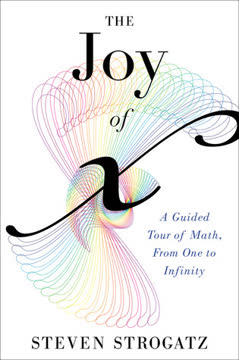


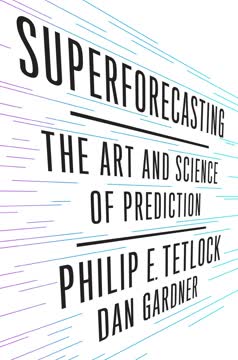

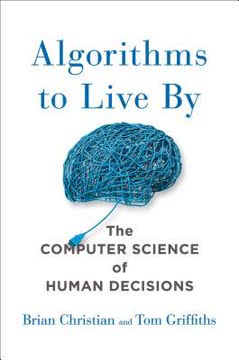

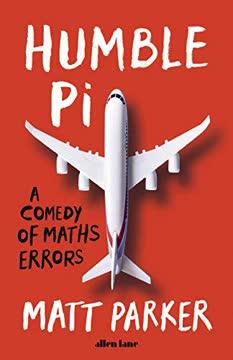

Download PDF
Download EPUB
.epub digital book format is ideal for reading ebooks on phones, tablets, and e-readers.
